Tired of perfectly manicured gardens that demand endless attention? Chaos gardening might be the answer you’ve been searching for. This unconventional approach embraces the messiness of nature, allowing plants to grow freely and in their own rhythm.
The result a vibrant, ever-changing landscape that feels as wild as it is beautiful. But, how do you ensure that the chaos doesn’t turn into total disorder.The key is choosing the right flowers that thrive in the ebb and flow of natural growth.
In this article, we’ll explore the best flowers to incorporate into your chaos garden ones that require little maintenance while adding stunning bursts of color and texture to your space. Ready to embrace the beauty of unpredictability.
1. Cosmos
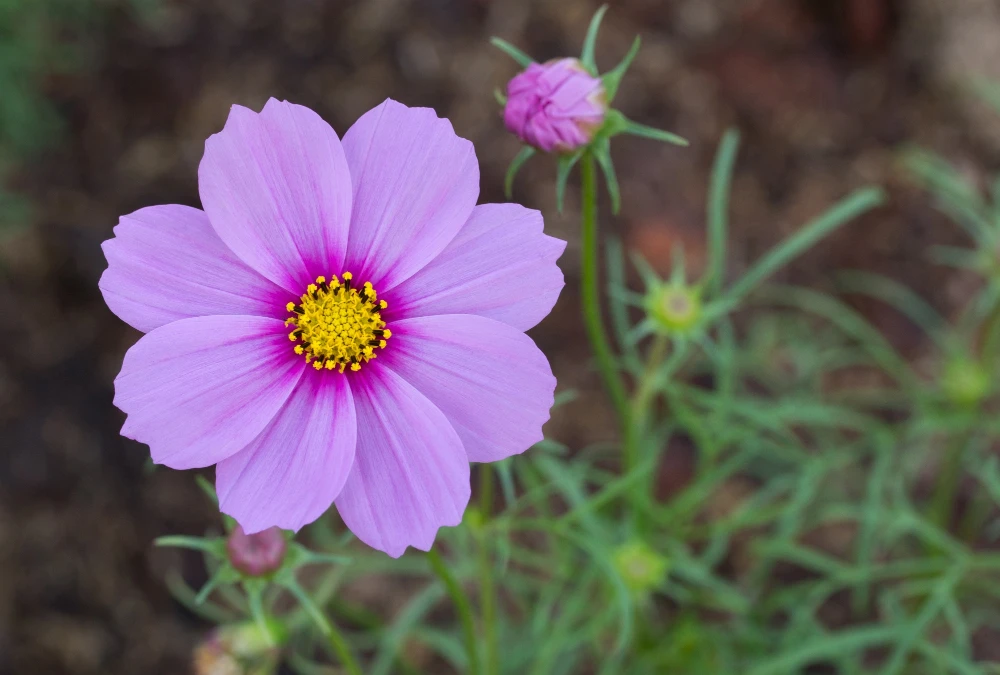
Soft pink petals with a golden eye say Cosmos at its breeziest. Another photo would show the fine fern like leaves that lace through the bed. This airy bloomer thrives in a free form chaos garden, filling gaps and lifting the whole mix.
Fern like foliage threads between taller stems, so it never bullies neighbors. Sow seed direct in full sun and average soil; rich soil makes floppy growth. Expect sprouts in about seven to ten days and flowers in eight to ten weeks.
Plants reach two to four feet, yet feel light and move with every breeze. Butterflies, bees, and hoverflies crowd the yellow center from dawn. Snip some blooms for the vase or let spent heads set seed. Self sown seedlings return next season, which suits the go with the flow style.
Water weekly as seedlings, then cut back and watch drought tolerance shine. Deadhead lightly for nonstop color from summer to first frost. Mix with zinnia, calendula, and ammi for a painterly, no fuss tangle.
2. Nasturtium
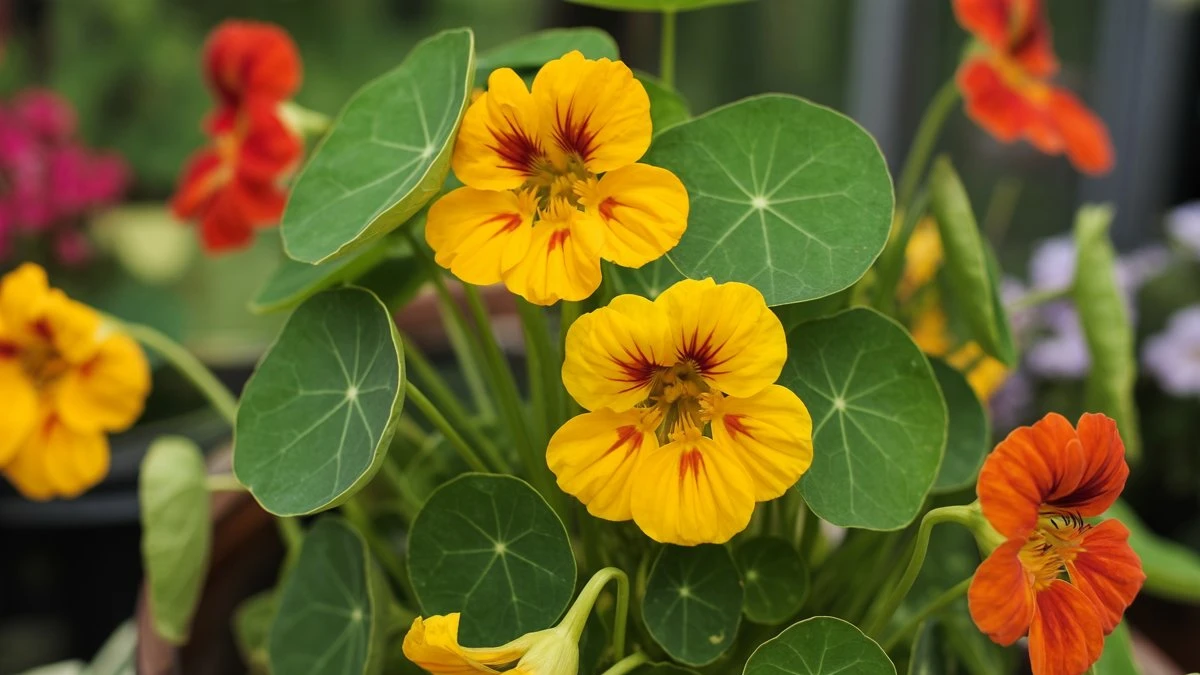
Golden and tangerine blooms shimmer above round shield like leaves, giving instant energy to a free form bed. Among the best flowers for chaos gardening, nasturtiums spread, spill, and weave through neighbors without fuss, filling gaps and softening edges.
Sow the fat seeds directly once soil warms above 12°C and you will see sprouts in 7 to 12 days, then a rush of color six to eight weeks later. Plants like full sun and average soil, and actually flower better with lean conditions and modest water.
Trailing stems can ramble a meter or more, so let them cascade from pots or wander through tomatoes and squash. Bees, hoverflies, and butterflies love the open throats, while aphids choose these vines first, acting as a living trap you can prune away.
Leaves and flowers add a fresh peppery note to salads, and the green seed pods make caper like pickles. Light deadheading keeps blooms coming from late spring to frost. Allow a few pods to drop for easy self seeding and next year’s cheerful tangle.
3. Marigold

Marigolds glow like little suns in the chaos garden. Their vivid orange petals open in clusters, filling the space with rich color and texture. The sturdy, compact plants grow quickly and spread generously, their frilled blooms standing tall among the tangle of other flowers and foliage.
Known for thriving in a variety of soil types, marigolds need only moderate water and plenty of sun to burst into bloom. They fit seamlessly into a wild garden design, working as border plants or tucked among vegetables and other flowers.
These cheerful blooms not only add vibrancy but also attract pollinators like bees and butterflies, creating a lively atmosphere. The leaves are also aromatic, helping to repel pests such as aphids and nematodes, making marigolds a natural companion in an organic garden.
While they bloom from early summer through frost, deadheading encourages continued flowering. Allow a few blossoms to go to seed for easy self-sowing, bringing a riot of orange back next year. Marigolds are the unsung heroes of the chaos garden, offering both beauty and practicality in the most colorful way.
4. Cornflower
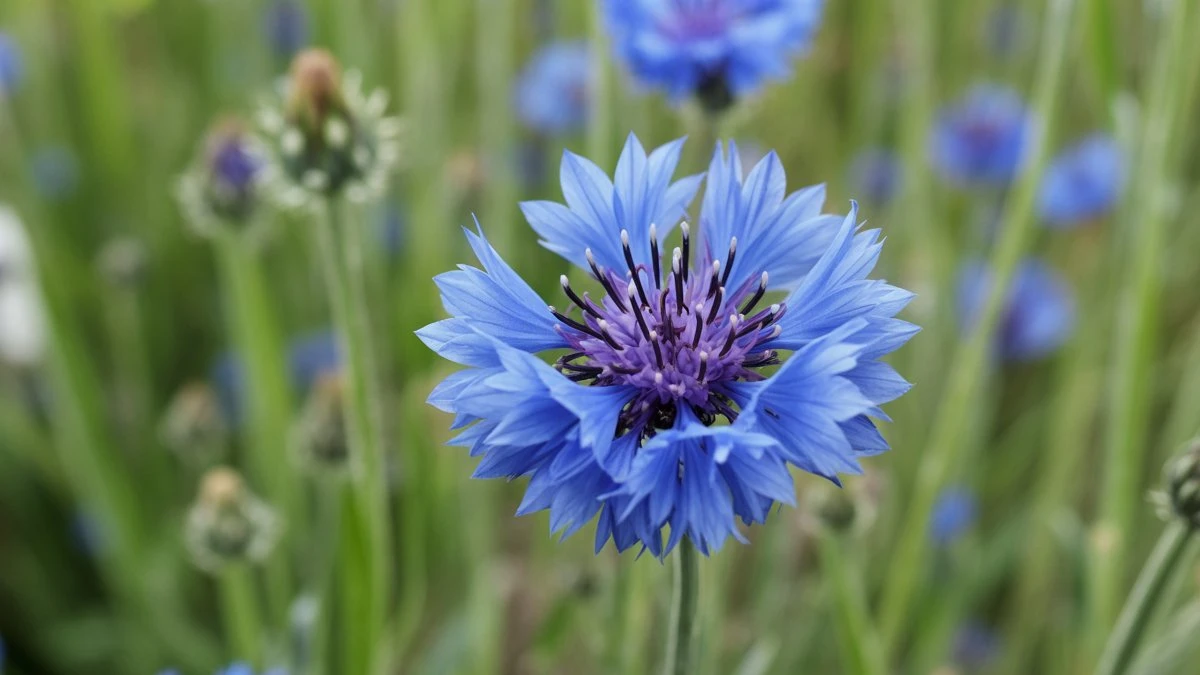
Cornflowers, with their striking blue blooms, bring an effortless splash of color to a wild garden. These hardy, low-maintenance plants stand out with their spiky petals and delicate, frilled edges.
As they thrive in poor soil and tolerate dry conditions, they’re well-suited to the laid-back nature of a chaos garden. Cornflowers grow tall, reaching around two feet, and their deep blue flowers form clusters atop sturdy stems, attracting bees and butterflies.
The plants spread naturally, creating a relaxed, sprawling effect that blends beautifully with other plants. They’re not fussy about care, requiring only moderate watering and plenty of sunlight.
Even better, they self-seed freely, ensuring your garden remains full of vibrant blue hues for years to come. Cornflowers pair wonderfully with poppies, daisies, and other wildflowers, adding a calming presence to the chaos.
Whether you let them spill from garden borders or stand proudly among taller flowers, their delicate form and vibrant color will infuse your garden with a sense of beauty and spontaneity. Keep them in sunny spots and watch them bloom from early summer until the first frost.
5. Zinnia
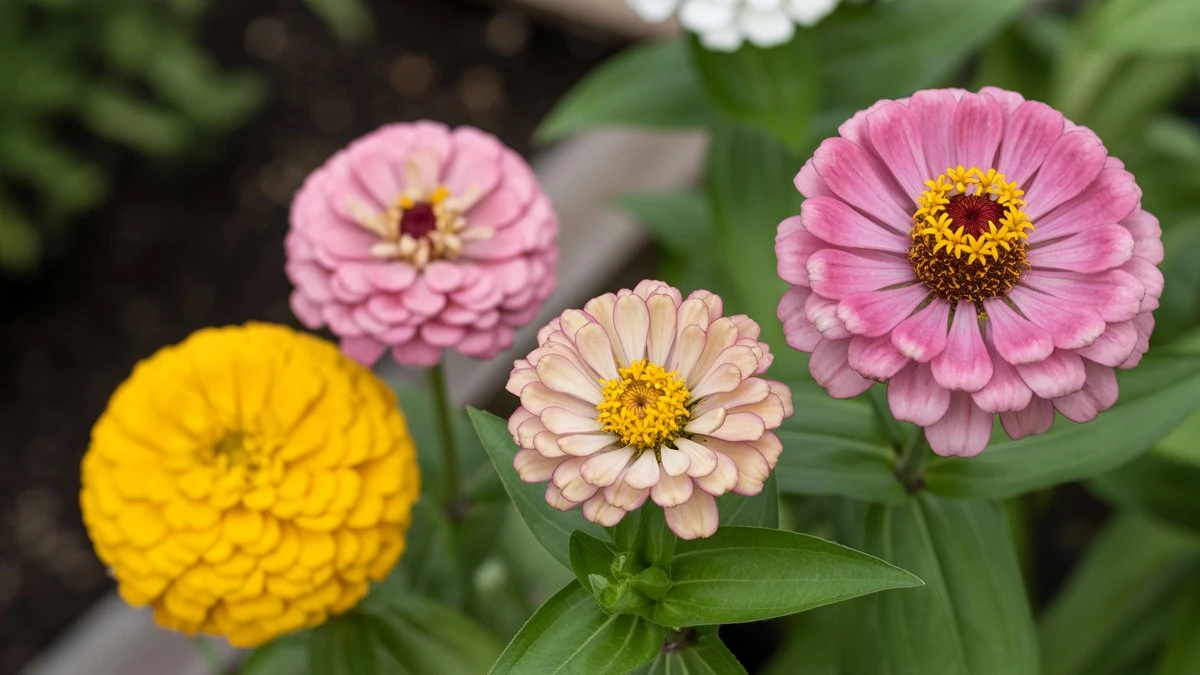
Zinnias bring a delightful burst of color to any garden with their vibrant petals, ranging from deep reds to soft pinks, oranges, and yellows. These flowers are a chaos gardener’s dream—low-maintenance, resilient, and full of character.
Zinnia plants grow quickly, often reaching heights of one to three feet, making them a standout in a wild, untamed space. They thrive in full sun and tolerate dry soil, making them both drought-tolerant and perfect for the laid-back garden style.
Each flower head is a mass of tightly packed petals around a bright yellow center, adding texture and dimension to a mixed border. Plant them among tall grasses, veggies, and other flowers, and watch as they thrive with minimal fuss.
Regular deadheading encourages continuous blooms, often from early summer until the first frost. With their ability to self-seed, zinnias will naturally return the following year, filling your garden with color without any extra effort.
Whether planted in clusters or scattered throughout, zinnias offer the right balance of structure and whimsy to keep your chaos garden full of life and color.
6. Poppy
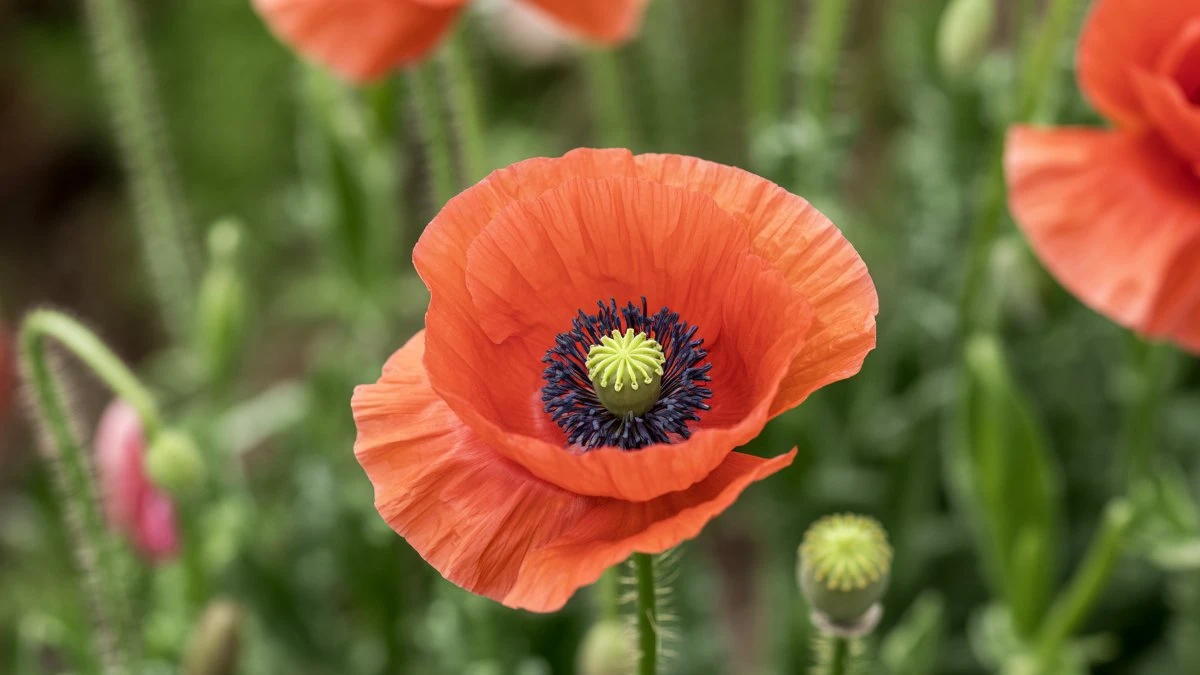
Poppies bring an effortless burst of color to a garden that’s meant to thrive in freedom. Their delicate, paper-thin petals in shades of fiery red and soft orange unfurl around a bold center of black and yellow.
These flowers, standing tall with thin, strong stems, add both elegance and vibrancy to a chaotic garden design. Poppies prefer full sun and thrive in poor to moderately fertile soil, which makes them a great choice for a no-fuss planting style.
Their wild, airy form creates an intriguing contrast when surrounded by the messier, tangled growth of other plants. Once established, they require little care beyond occasional watering, and their self-seeding nature means they’ll return year after year, ensuring your garden’s bold color doesn’t fade.
Poppies bloom profusely in early summer, their ruffled petals swaying in the breeze, attracting pollinators like bees and butterflies. They are perfect for breaking up the dense clusters of greenery, giving a touch of wild beauty and a pop of color.
Allowing some flowers to go to seed will naturally fill in the gaps and bring a graceful, vibrant touch to your chaotic landscape.
7. Alyssum

Alyssum fills the air with a sweet, honey-like fragrance that’s hard to ignore. Its tiny white flowers cluster together, creating a soft, delicate carpet of blooms that adds a gentle, calming touch to any chaotic garden.
This low-growing flower thrives in the sun, weaving its way through taller plants with ease. The small, rounded leaves help ground the garden, filling in empty spaces without overwhelming the other plants.
Alyssum is incredibly versatile, often used to soften the edges of a wild garden or spill over the sides of containers. It requires little attention, flourishing in average soil and needing only occasional watering once established.
Alyssum’s ability to self-seed makes it a natural choice for a carefree garden, returning season after season without extra effort. It’s also a pollinator favorite, attracting bees and butterflies, which adds to the liveliness of the space.
Allow a few flowers to fade into seed pods, and the next generation of alyssum will naturally fill in the gaps, creating a seamless blend of color and fragrance all summer long.
8. Everlasting Daisy
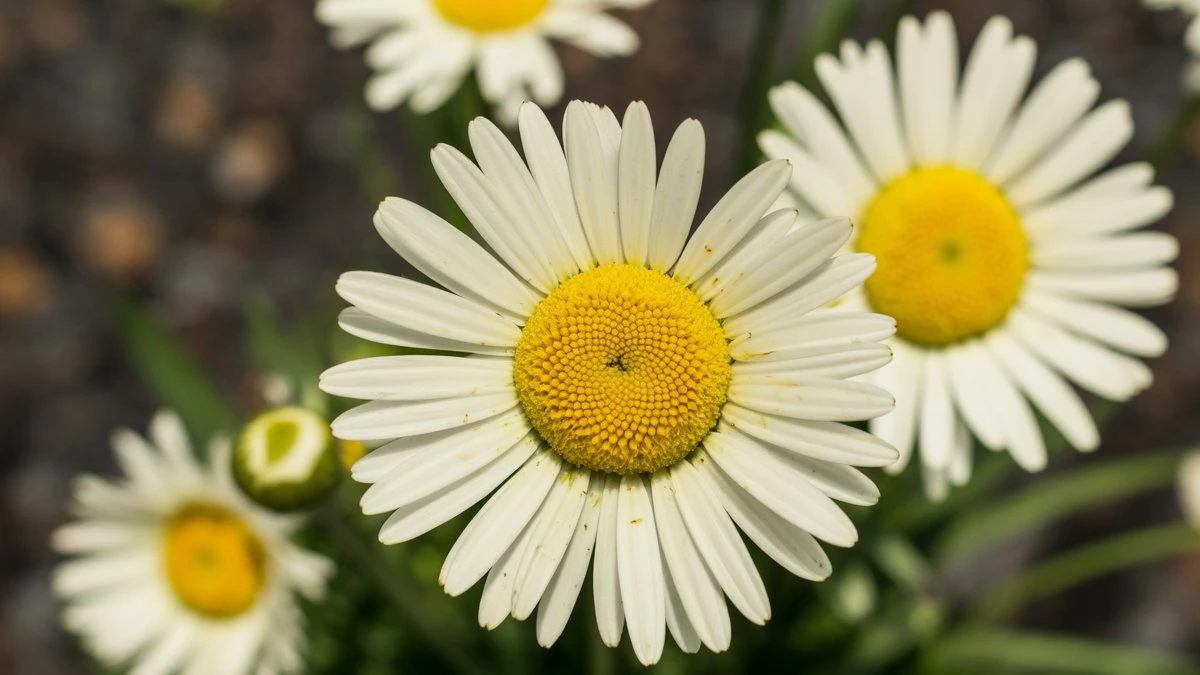
The daisy’s cheerful, simple beauty makes it a natural fit for a chaos garden, offering both structure and whimsy. With bright white petals framing a bold yellow center, these flowers bring a fresh, clean look to any space.
Daisies are easy to grow and require little maintenance, thriving in well-drained soil and full sun. They make excellent companions for other wildflowers, adding a touch of brightness without overpowering the garden’s natural flow.
Once established, daisies spread effortlessly, their robust, leafy stems offering support to neighboring plants. Their delicate petals flutter in the breeze, adding movement and life to the scene.
These flowers also attract pollinators, ensuring the garden remains lively and productive. Deadheading spent blooms encourages continuous flowering from spring until the first frost.
Daisies also have a self-seeding nature, ensuring that next year’s display will be as vibrant as the last. Whether tucked into a bed of wildflowers or lining the edges of garden paths, daisies offer a timeless, easy-to-care-for addition to any chaotic, yet beautiful, garden design.
9. Calendula
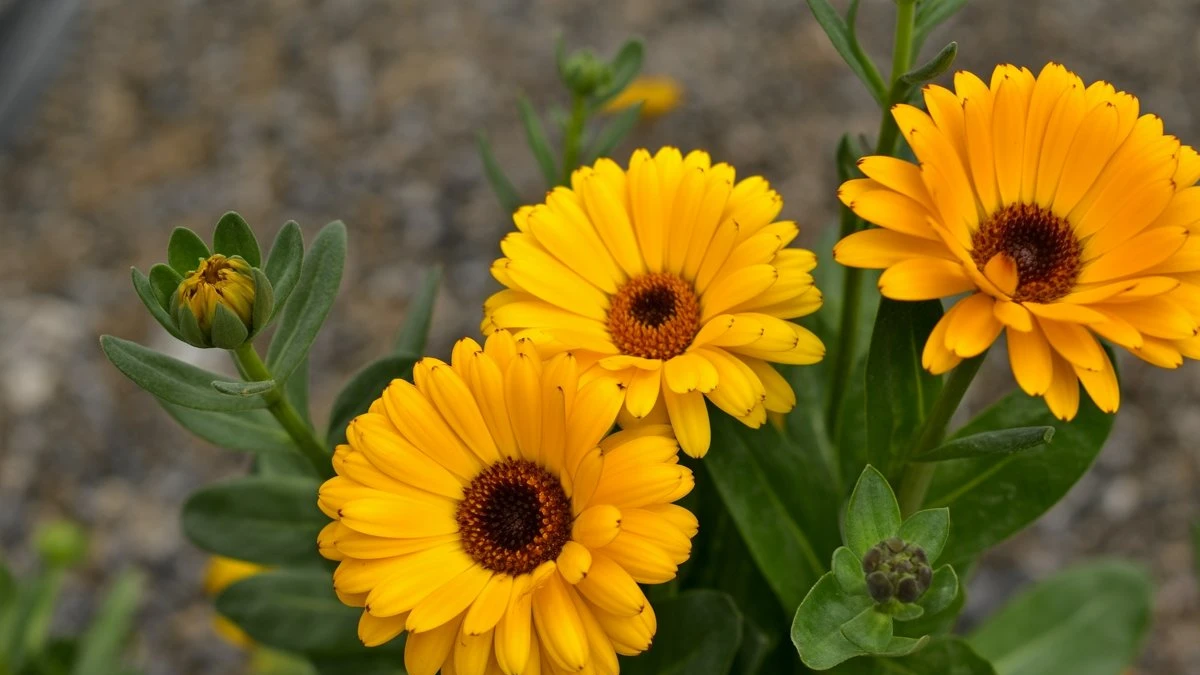
Calendula, with its rich orange and yellow blooms, brings a burst of sunshine to the garden. These cheerful flowers thrive in a chaotic garden, where they weave effortlessly between other plants, filling empty spaces with vibrant color.
Known for their resilience, calendulas are easy to grow in a variety of soil types and require minimal care. They are drought-tolerant and can withstand poor soil, making them a perfect addition to any low-maintenance garden.
The petals, often used in herbal remedies, add a touch of old-world charm, while their bright centers attract bees and butterflies, keeping the garden alive with movement.
Plant them in full sun, and they’ll bloom from early spring to late fall, their flowers standing tall with a simplicity that commands attention. Calendulas also self-seed, making them a practical choice for those who want a no-fuss flower that keeps on giving.
Regular deadheading encourages new blooms, ensuring your garden remains filled with color throughout the seasons. Calendula’s ability to thrive in wild conditions makes it a perfect companion for the free-spirited chaos garden.
10. Lupine
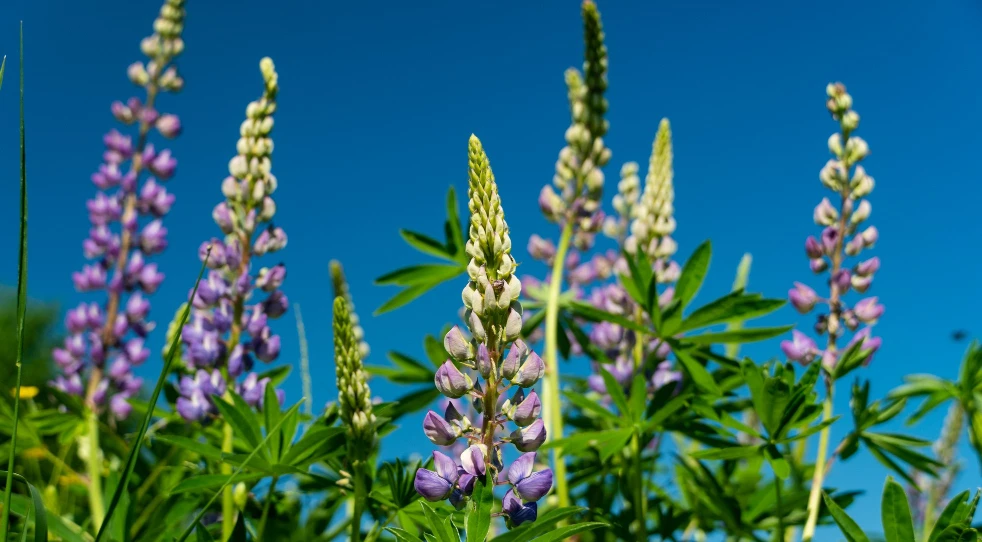
Lupines stand tall with their striking spires of purple, pink, and white blooms, adding a dramatic flair to any chaotic garden. Their tall, sturdy stems rise above surrounding plants, making them an ideal choice to create vertical interest.
Lupines thrive in well-drained soil and full sun, where they bloom prolifically in late spring and early summer. The flower clusters open from the bottom up, creating a cascading effect that catches the eye.
With their fern-like foliage and bold flowers, lupines naturally fill the back of a flower bed, offering a contrast to shorter, more rounded plants. They attract pollinators like bees and butterflies, adding an extra layer of life to the garden.
Once established, lupines require little maintenance, though they do appreciate regular watering. They also self-seed generously, ensuring new plants will emerge in future seasons without much intervention.
The colorful spikes can blend beautifully with a variety of other plants, creating a wild, untamed effect that is the hallmark of chaos gardening. Lupines bring both elegance and energy, making them a strong yet gentle presence in your garden.
11. Bee Balm
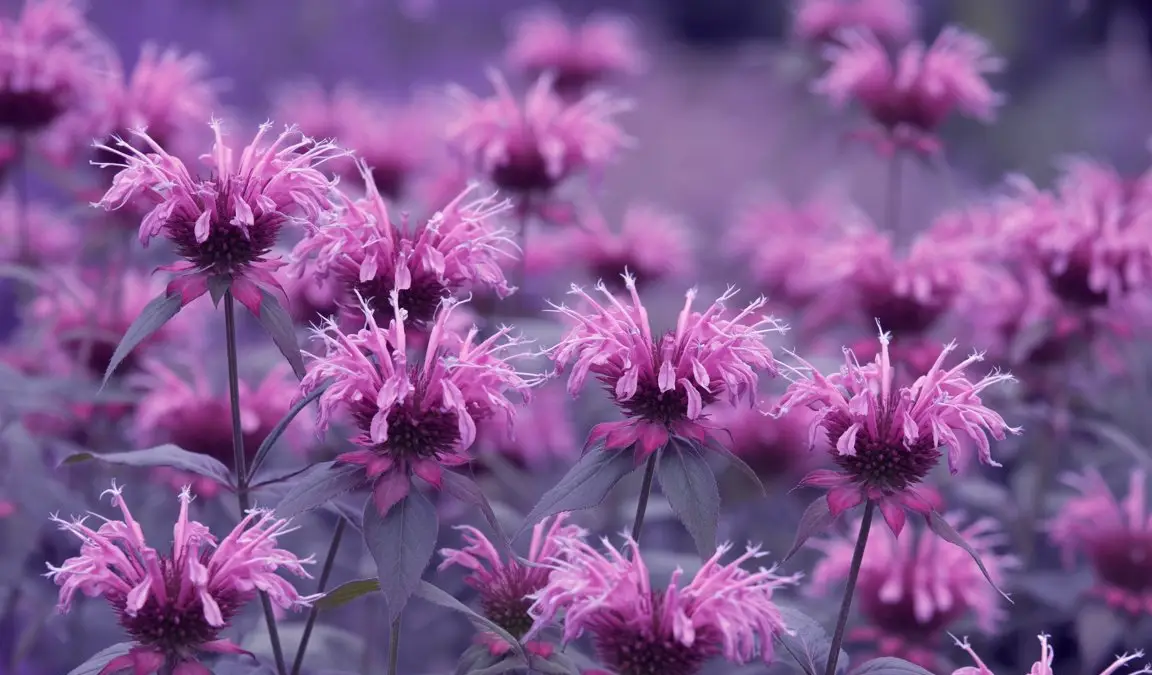
Bee balm, with its vibrant pink to purple blooms, commands attention in any chaotic garden. The spiky flowers, set atop tall, sturdy stems, exude a wild yet striking beauty.
Their delicate petals burst outward, resembling fireworks in full bloom, and are irresistible to bees, butterflies, and other pollinators. Known for its aromatic leaves, bee balm releases a pleasant herbal scent, adding another sensory layer to your garden.
Thriving in full sun and moist, well-drained soil, it’s a resilient flower that grows easily without much maintenance. Bee balm’s sprawling nature makes it a great filler for a garden that thrives on organic, free-form growth.
It often reaches heights of 3 to 4 feet, providing a striking vertical element among shorter, more compact plants. The flowers bloom from mid-summer to early fall, with regular deadheading encouraging longer-lasting color.
With its tendency to self-seed, bee balm will return year after year, ensuring a continuous display of lively color and fragrance. Its wildflower appeal makes it a natural fit for any garden aiming to embrace a carefree, untamed aesthetic.
12. Comfrey
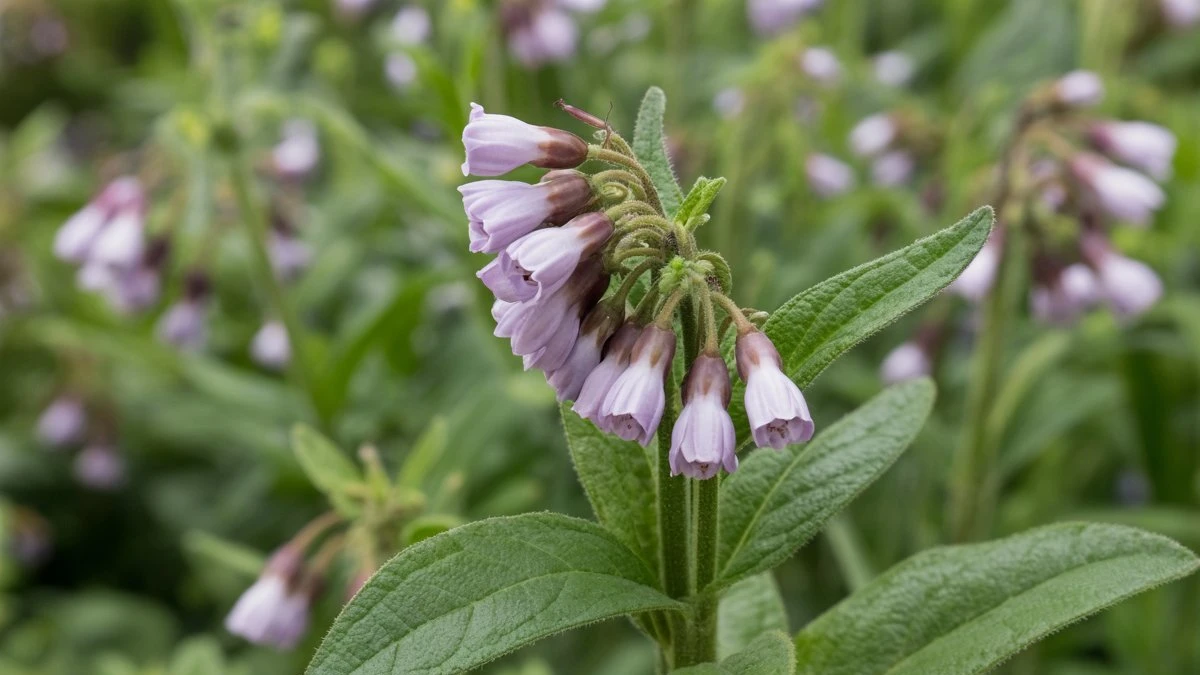
Comfrey is a rugged beauty that thrives in a chaotic garden, where its tall, arching stems and vibrant clusters of bell-shaped flowers stand out among a mix of wild blooms.
Its broad, velvety leaves provide an earthy green backdrop for the delicate purple, pink, or white blossoms that form in dense clusters along the stems.
Comfrey grows vigorously, spreading across the garden and filling gaps where other plants might struggle. It’s an excellent choice for adding texture and height to a garden that values natural growth.
Once established, comfrey requires little maintenance, thriving in well-drained soil and full sun. Its deep taproot makes it highly drought-tolerant, ensuring its presence throughout dry spells.
Additionally, comfrey is a beloved plant for pollinators, attracting bees and butterflies with its nectar-rich flowers. It also serves as a green mulch when leaves are cut back, enriching the soil with valuable nutrients.
This hardy, low-maintenance plant not only adds visual interest but also nurtures the soil and garden ecosystem, making it a perfect fit for a thriving chaos garden.
13. Foxglove
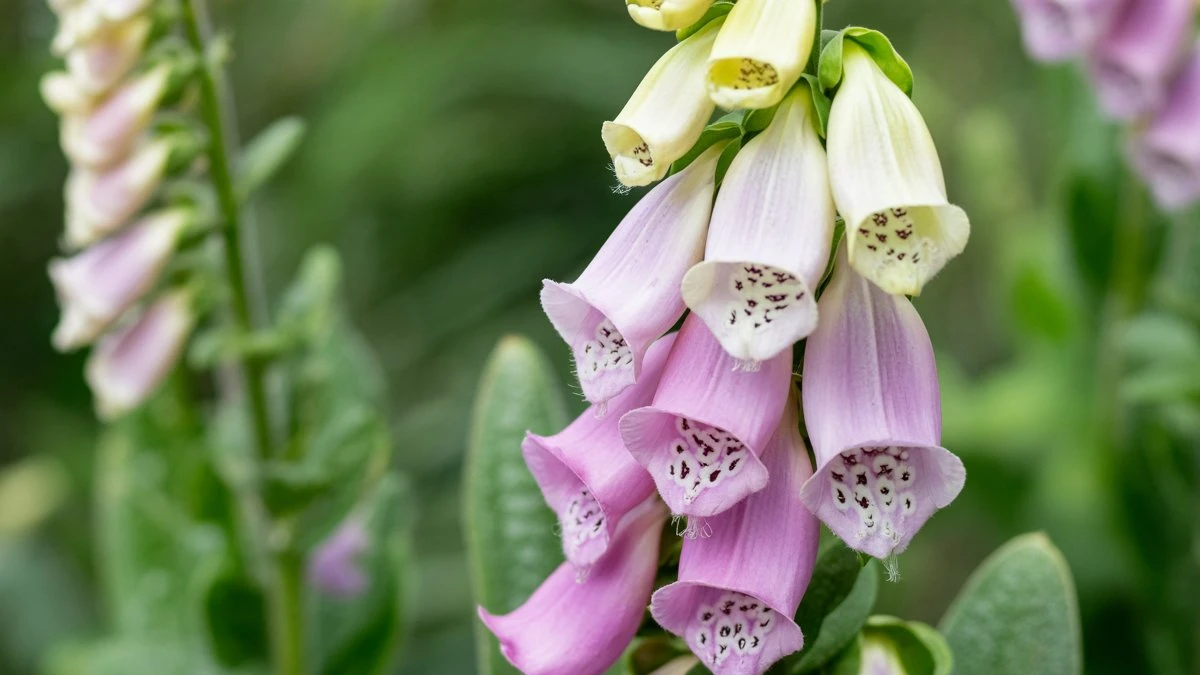
Foxglove stands as a towering beauty, with its vertical spikes of delicate bell-shaped flowers cascading in hues of soft purple, pink, and white. Their elegant form makes them a standout in any garden, offering dramatic height and visual interest.
Thrives in partial to full sun and well-drained soil, and it is well-suited to a chaotic garden, where it can reach heights of 4 to 5 feet. The flowers bloom from mid to late summer, their graceful spikes attracting bees and hummingbirds with their nectar-rich blooms.
These plants have a natural way of filling the gaps between other flowers and plants, creating a striking vertical contrast in the landscape. Foxglove is a perfect fit for a wild garden, where its boldness blends with more unruly growth.
The plants are relatively easy to maintain once established, but they do prefer moisture-rich soil and occasional watering during dry spells. Foxglove also self-seeds, ensuring new plants will emerge, adding a natural, ever-evolving layer to your chaotic garden.
A perennial that will continue to surprise and enchant year after year, foxglove brings an air of elegance to the untamed beauty of your garden.
14. Climbing Roses
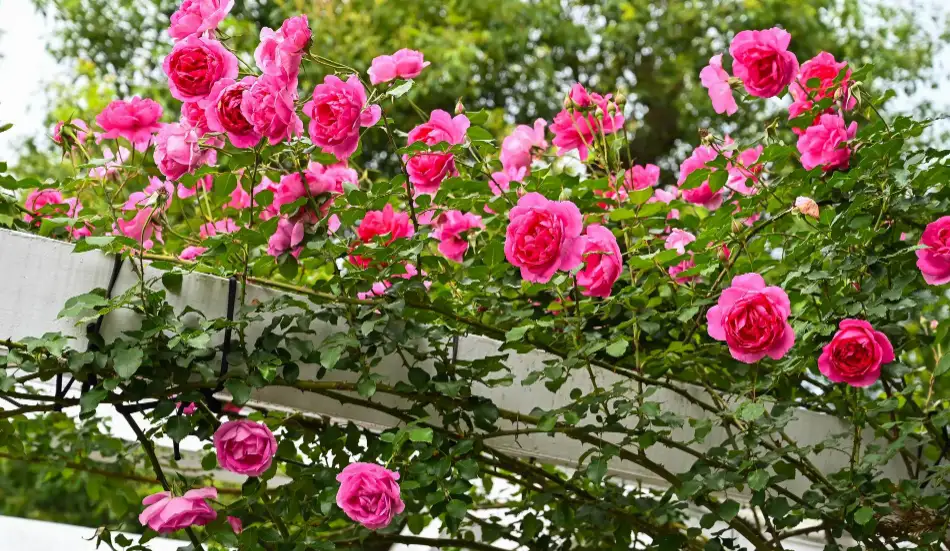
Climbing roses add a romantic touch to any chaotic garden, with their sprawling vines and vibrant, fragrant blooms. This particular variety, bursting with rich pink petals, creates a stunning visual effect as it climbs and cascades over trellises, arbors, or fences.
The roses bloom profusely in clusters, filling the air with a sweet fragrance that attracts both pollinators and passersby. Their strong, climbing stems intertwine, weaving through the surrounding plants, effortlessly integrating into a garden that thrives on natural growth.
While they need some initial support to climb, these roses will soon take over their space, adding a layer of elegance to a wild design. They thrive in full sun, well-drained soil, and need regular watering to stay healthy, but once established, climbing roses become quite hardy.
Deadheading the spent blooms encourages more flowers to emerge, ensuring that the garden remains lush and colorful throughout the season. In a chaotic garden, their untamed growth offers both beauty and structure, creating a breathtaking focal point. The soft pink hue of these roses balances the wildness around them, bringing a touch of grace to the surrounding plant life.
15. Dill Flower

Dill flowers add a delicate, airy quality to any chaotic garden. With their umbrella-like clusters of tiny, bright yellow blooms, they create a soft contrast against the more robust plants around them.
Dill is a natural addition to gardens that celebrate wild growth, as its feathery, fern-like foliage spreads and weaves through the landscape. This herb thrives in well-drained soil and full sun, offering a mix of functional beauty.
Beyond their ornamental appeal, dill flowers attract pollinators like bees and butterflies, supporting a healthy garden ecosystem. They’re also known for their medicinal and culinary uses, making them a great addition to a garden that serves both aesthetic and practical purposes.
Dill’s upright growth habit makes it an ideal plant for filling vertical space, adding height and structure without overwhelming the garden’s natural chaos. Once the flowers begin to fade, the seeds can be collected and used for cooking or replanting.
With its self-seeding nature, dill returns year after year, ensuring a continuous supply of fragrant flowers and seeds. Dill flowers seamlessly blend beauty and utility, making them a must-have for any wild garden design.

